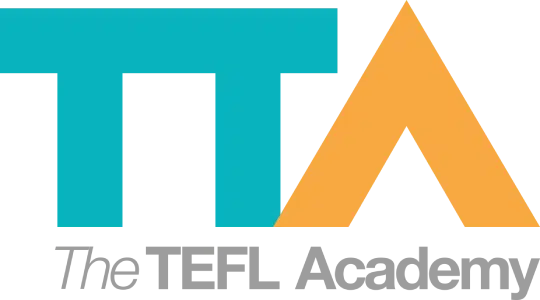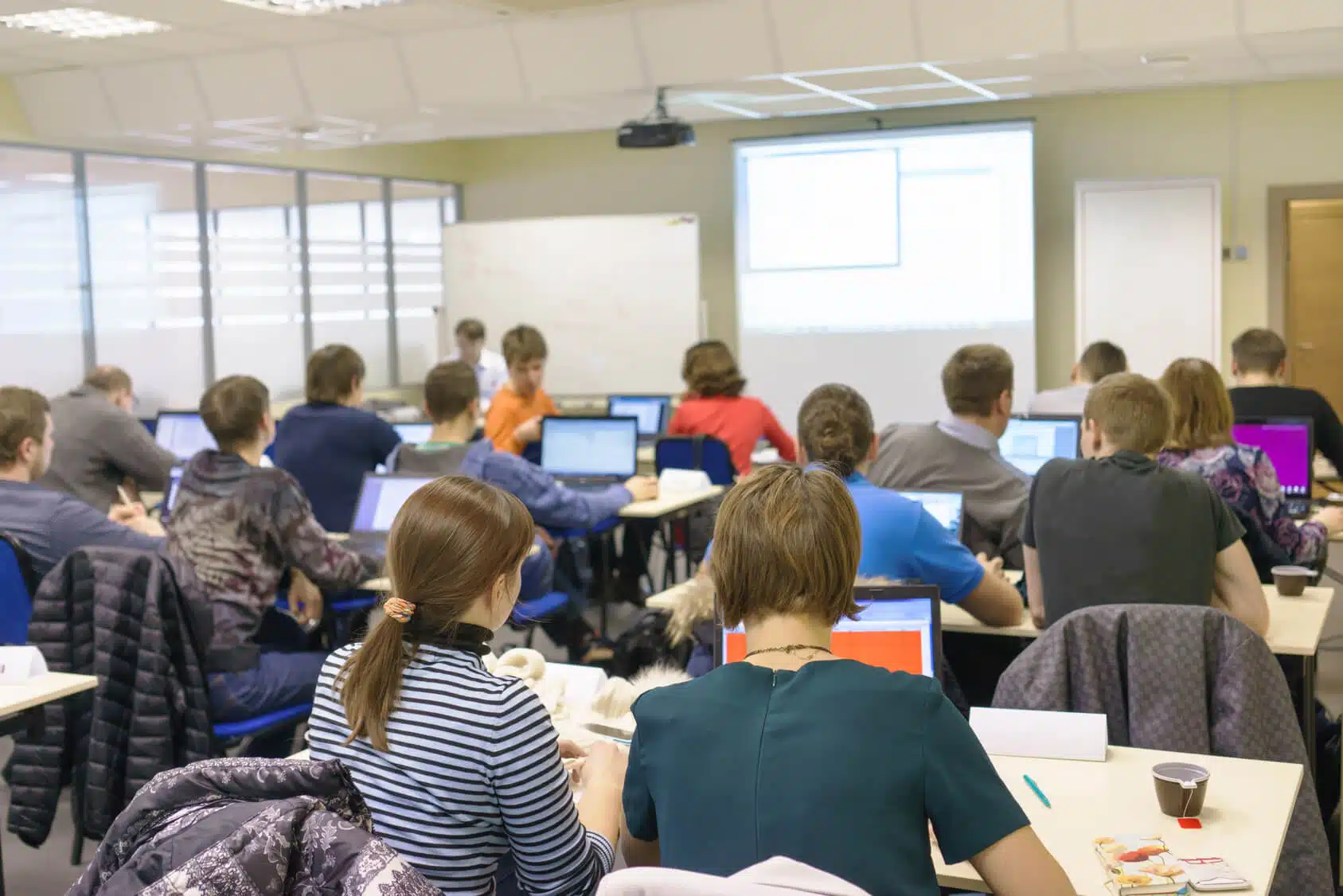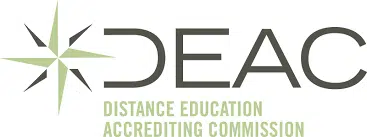Teaching Teens Vs Adults: Key Differences (And Surprising Similarities) Every TEFL Teacher Should Know
Join a global community of over 200,000 TEFL teachers working throughout the world! Enrol me!
Ever walked into a classroom of sulky teenagers on a Monday morning, then switched to teaching motivated business professionals that same afternoon? If you have, you know the whiplash is real.
Teenagers bring energy; adults bring life experience. One group worries about exams, the other about deadlines.
Ask any teacher and they’ll tell you that teens and adults learn differently. As a result, teachers often find themselves adjusting their strategies when switching from one age group to another.
TEFL teachers need to be flexible.
This means being able to move between teaching different age groups. Sure, you might have a preferred niche, but life has a way of surprising you, and fast.
One day, you might be correcting presentations for Business English students; the next, you’re leading energetic games to keep a class full of Vietnamese teens engaged — that kind of adaptability is what keeps your TEFL career moving forward, no matter where life takes you.
While both age groups aim to learn English, their motivations, learning styles and classroom dynamics can vary significantly.
What motivates teens vs adults in English classes?
Teenagers often learn English as part of their school curriculum, so their motivation may be extrinsic. They may be aiming to meet academic requirements or parental expectations. This can sometimes result in a lack of enthusiasm or engagement.
Read more: Keeping Your Teenage Students Interested
Adults typically enrol in English courses voluntarily, driven by personal or professional goals such as career advancement, travel, or immigration. This intrinsic motivation often leads to a more committed and goal-oriented approach to learning.
💡Tips:
- Make it relevant — connect learning to your students’ lives
- Set clear expectations relating to behaviour and learning goals
Read more: How To Motivate Adult Learners To Learn English
Cognitive development and learning styles
Teenagers are still in the midst of cognitive development and may grasp new language concepts quickly, but might struggle with abstract thinking. They benefit from interactive and engaging activities that cater to their developmental stage.
Adults have more developed cognitive abilities and can understand complex language structures and abstract concepts. They often appreciate lessons that are structured and directly applicable to real-life situations.
💡Tips:
- Incorporate variety — mix up activity types to keep students engaged
- Use instructional media (video, podcasts, realia, images, augmented reality, etc.) to add interest and cater to different learning styles.
Read more: How do Adults Learn Foreign Languages: How to Teach English to Adults
Lesson planning for teens and adults
Teenagers need shorter activity segments to match their attention spans. Plan for 10-15 minute blocks with frequent transitions between activities. Start with a warm-up game, move to focused practice, then end with something interactive. The variety keeps them engaged.
💡Tip:
- Plan transitions carefully — downtime is when chaos happens.
Adults can handle longer activities and appreciate sustained focus on a single topic. They’re comfortable with 20-30 minute discussions or problem-solving tasks. However, they may need more processing time when learning new concepts, so don’t rush through material.
💡Tip:
- Allow time for questions and deeper exploration of topics.
Classroom management for teens vs adults
Teenagers may exhibit varying levels of motivation. They can sometimes be challenging to manage due to their developmental stage. Fluctuating hormones contribute to impulsive behaviour, mood swings, temper flares and disrupted sleep, leading to fatigue.
Teenagers love to test boundaries and may take advantage of teachers who are too easy-going. A good rule of thumb is to start strict, then relax the rules as they get to know you. This will help maintain a sense of control.
Read more: The Challenges Of Teaching Teens
TEFL teachers can mitigate this by establishing clear rules to support classroom management, while also fostering a dynamic classroom environment that engages and focuses their students’ attention throughout the lesson.
To support effective classroom dynamics, teens need to develop their social skills. This can be done through pair and group work.
Encourage their growing independence by allowing them to choose partners, while also fostering communication and collaboration skills by occasionally pairing them with peers outside their friend circle.
💡Tips:
- Build rapport early — establish positive relationships.
- Provide clear instructions — incorporate step-by-step guidance.
- Encourage peer interaction — students can learn from each other.
Read more: Teaching Teenagers Using Flow
Also, watch what you say. Teens are quite sensitive and will benefit from positivity and regular encouragement.
Characteristics of teenagers
- Curious & experimental
- Needs more structure
- Influenced by peers & look to role models
- Active & meaningful learning
- Peer collaboration
- Restless & easily fatigued
- Approval seekers & self-conscious
- Sensitive
In contrast, adults are generally more disciplined and self-regulated, so they need less classroom management. They’re also typically taught in smaller groups, creating an intimate setting that helps build relationships.
Read more: 5 Tips For Building Rapport In The EFL Classroom
Adults often expect a higher level of professionalism and respect in the learning environment, so teachers must be extra mindful of how they communicate and respond to them.
They are more independent, so assigning partners for group work can feel unnecessary. You won’t have to work as hard to keep their interest as they need less stimulation as teens — often, the right topic is enough to keep them engaged and motivated.
However, some adults may feel self-conscious about being back in the classroom, which can lead to a bit of anxiety or discomfort. Acknowledge this openly and create a judgment-free environment where mistakes are seen as learning opportunities.
Characteristics of adult learners
- Self-directed & autonomous
- Goal-oriented & big-picture thinking
- Life experience
- Highly motivated
- More resistant to change
- Problem-solving mindset
- Slower learning pace
- Anxious
Read more: Top Tips For Improving The Learning Process For Adults
How to teach adults vs teenagers
Teaching adults and teenagers may follow the same basic principles, but the way you apply them can look very different. This may mean adjusting how you introduce topics, how deeply you engage with your students, the way you provide feedback and the teaching style you adopt.
Cultural awareness and sensitivity
Teenagers might lack cultural awareness, making it important to introduce cultural topics in a sensitive and age-appropriate manner. They would also benefit from diversity, which may be introduced through open discussions, collaborative activities and diverse teaching materials.
Adults often bring diverse cultural perspectives to the classroom, enriching discussions and providing opportunities to explore cultural nuances in language use. Play into this by encouraging adults to share their own experiences, compare perspectives and connect learning to real-world situations such as workplace scenarios, current events, or cultural practices they encounter in daily life.
💡Tips:
- Build in authenticity — be sincere and make real-world connections.
- Use the target language to create an immersive environment.
Read more: Authentic Materials: How To Find Them And How To Use Them
Critical thinking
Teens are more easily influenced by the trends and opinions they see on social media, which shape their outlook on life. Therefore, they require more critical thinking skills and discussion to explore topics.
💡Tips:
- discuss news articles,
- evaluate opinions seen in the news and/or social media, or
- engage in role-play.
Adults generally have life and work experience and have more developed critical thinking skills. They can engage in deeper analysis, nuanced debate and self-directed inquiry.
Technology and digital tools
Teens are digital natives, but that doesn’t mean they use technology effectively for learning. Sure, they’re comfortable with apps and online platforms, but they still need guidance on how to use them productively, rather than as distractions.
Incorporate tools like Kahoot, Quizlet, or collaborative documents, but set clear expectations about device use.
💡Tips:
- Use technology purposefully.
- Gamified learning apps can boost motivation.
Adults may have varying comfort levels with technology — some embrace it enthusiastically; others feel anxious about learning new platforms. Of course, their level of comfort depends on their age and usage.
💡Tips:
- Focus on tools that directly support their goals (e.g., business communication apps, pronunciation tools).
- Introduce digital tools gradually.
- Provide clear tutorials.
You never know when a power outage or tech glitch threatens to disrupt your lesson. So no matter what age group you’re teaching, always have a low-tech backup plan!
Feedback and assessment
Teenagers respond well to positive reinforcement and constructive feedback. Regular assessments can help track progress and identify areas for improvement.
Adults appreciate constructive criticism and detailed feedback that can aid in their professional or personal development. Assessments should align with their learning objectives and real-world applications.
💡Tips:
- Provide regular feedback — students need to know how they’re progressing.
- Balance accuracy and fluency — avoid overcorrection
- Celebrate progress — recognise your students’ efforts to boost morale.
Read more: 5 Things To Remember When Giving Feedback To Students
Personalisation and teaching style
Personalisation has become a buzzword in education circles, especially now that AI has made it more feasible.
Understanding the differences in motivations, needs and learning styles between adults and teenagers will help you design meaningful lessons that keep them coming back for more.
Despite student-centred learning being all the rage, if you have a group of awkward teens who refuse to speak up, embrace teacher-led instruction until they become more comfortable — don’t force it.
The same goes for adults. If your older students love chatting away, take a backseat and let them lead the lesson while you guide and cheer them on from the sidelines.
Knowing what teaching strategies to employ when is the hallmark of a good teacher.
Read more: From Teacher-Centred To Learner-Centred: Transforming Your Classroom For Success
In the end, it isn’t about choosing which group is “easier” or “better” — it’s about recognising that both require different versions of your best self.
With teens, you’ll need energy, boundaries and the ability to pivot when your lesson goes awry.
With adults, you’ll need patience, professionalism and respect for the knowledge they bring to the table.
But the core mission stays the same: helping students communicate confidently in English. The path there changes with every classroom you walk into.
Regardless of age, all learners benefit from clear communication, meaningful content and a teacher who genuinely cares about their progress. By understanding what drives each age group and adapting your teaching strategies accordingly, you can create learning experiences that resonate and deliver results.
Start experimenting with these strategies in your classroom. Notice what happens and adjust where necessary. That’s how you become the kind of teacher who can thrive with any age group, anywhere in the world.
Accreditation & Quality Assurance
The TEFL Academy was the world’s first TEFL course provider to receive official recognition from government regulated awarding bodies in both the USA and UK. This means when you graduate you’ll hold a globally recognised Level 3 (120hr) Certificate or Level 5 (168hr) Diploma, meaning you can find work anywhere and apply for jobs immediately.
 United States
US
United States
US




















